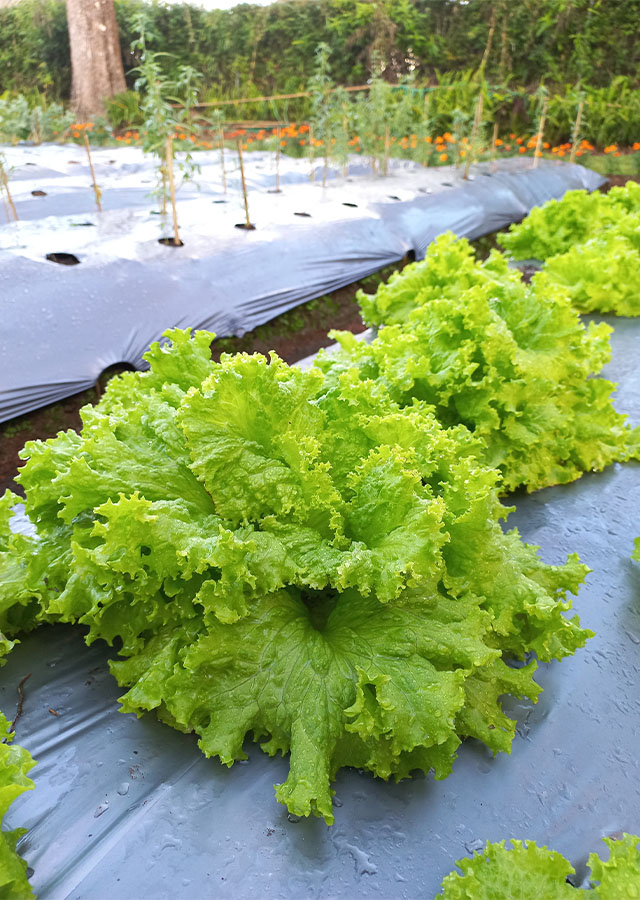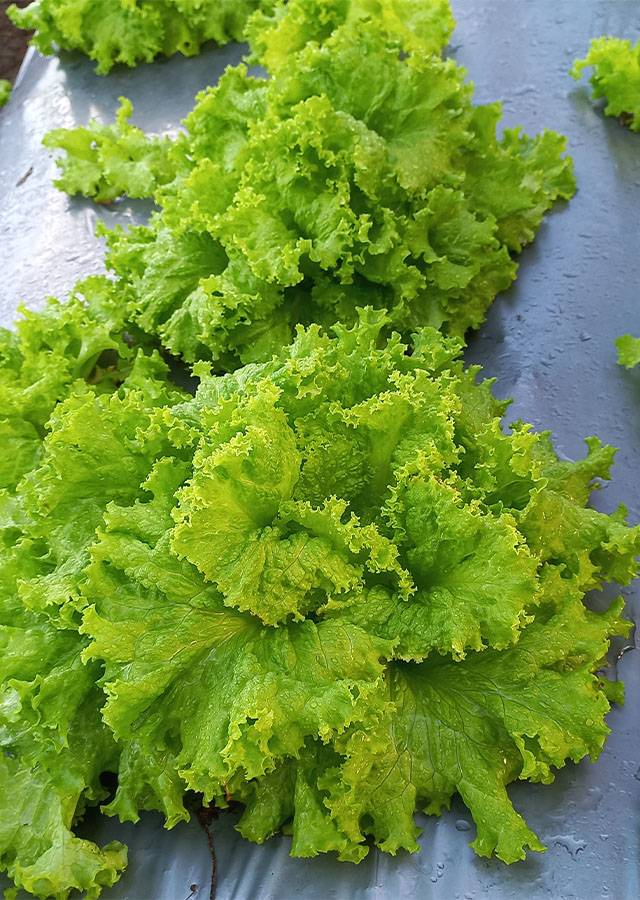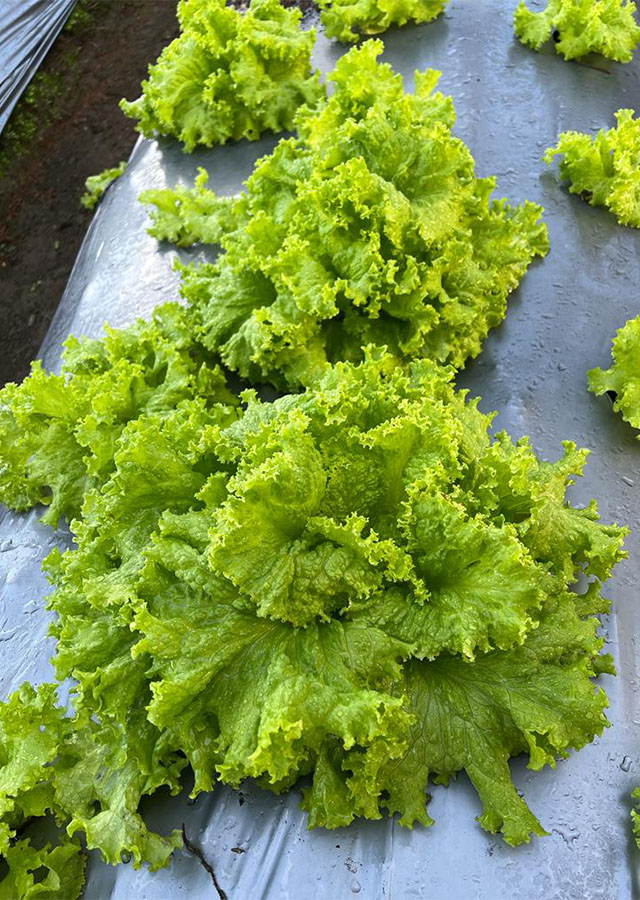Lettuce
Lactuca sativa L.
Asteraceae
Location in our garden
Vegetable



Synonym
Lactuca capitata (L.)
Lactuca crispa (L.) Roth
Lactuca esculenta Salisb.
Habitus
Herbaceous. An annual to biennial plant, usually grown as an annual crop, but growing up to 90 cm tall when flowering
Part Used
Leaves
Seeds
The Whole Plant
Growing Requirements
Full Sunshine
Habitat
Mountains
Terrestrial
Overview
The origin of lettuce is believed to be in Asia Minor or the Middle East. It was known as a vegetable and for its medicinal properties as early as 4500 BC. It was a popular vegetable of the Greek and Romans. In western Europe, the headed types have been known since the 14th Century but the leafy types have been known for much longer. Lettuce, especially the headed type, is currently the world's most important salad crop and a popular vegetable in almost all countries of the world.
Vernacular Names
Wo ju (Chinese), Bindsalade (Dutch), Laitue (French), Gartenlattich (German), Marouli (Greek), Insalata (italian), Chisa (Japanese), Alface (Portuguese), Lechuga (Spanish), Salat (Vietnamese), Letsugas (Philippines)
Agroecology
Lettuce grows best at moderate day temperatures of 15-20 °C and cool nights. In the tropics it thrives best in the highlands and during the coolest season in the lowlands. Prefers a light sandy loam. Succeeds in most well-drained, humus-rich soils but dislikes acid conditions. Plants strongly dislike dry conditions, quickly running to seed in such a situation. Early and late sowings are best in a sunny position, but summer crops are best given a position with some shade in order to slow down the plants tendency to go to seed and to prevent the leaves becoming bitter.
Morphology
- Roots - taproot slender at first, later thickening, reaching 1.5 m depth.
- Stems - at first short with radical leaves arranged spirally, in cv. group Stem Lettuce developing into a 30-50 cm long, fleshy organ.
- Leaves - variously arranged, depending on cultivar, in more or less compact heads or not in heads; shape, size and colour differing with cultivar; rosette leaves undivided to runcinate-pinnatifid, sometimes curly and fringed, shortly petiolate, green or sometimes with red anthocyanin pigment; stem leaves becoming progressively smaller, ovate to orbicular in outline, entire, cordate-amplexicaul, sessile, not held vertically.
- Flowers - a dense, corymbose, flat-topped panicle with flowers arranged in heads; involucre 10-15 mm long, consisting of 3-4 rows of lanceolate or ovate bracts; head with 7-15(-35) florets, all ligulate and hermaphrodite, yellow, exserted above the involucre; stamens 5 with connate anthers; stigma bifid.
- Fruits - a narrowly obovate achene, 3-8 mm long, compressed, 5-7-ribbed on each side, white, yellowish, grey or brown; tip constricted into a narrow beak, surmounted by a white pappus of 2 equal rows of soft hairs.
Cultivation
Propagated by seeds - sow a small quantity of seed in situ every 2 or 3 weeks from early spring (with protection in cooler areas) to early summer and make another sowing in mid summer to early autumn for a winter/spring crop. Only just cover the seed. Germination is usually rapid and good, thin the plants if necessary, these thinnings can be transplanted to produce a slightly later crop (but they will need to be well watered in dry weather).
Chemical Constituents
Mannite, mallic acid, asparagine, oxalic acid, essential oils, d- and B-lectucerol, inosite, lactucin, triterpenoids, saponins, polyphenols, quercetin, caffeic acid, alkaloids, b-carotene, and lutein.
Traditional Medicinal Uses
- Extract from fresh plant is a mild sedative, also useful in the treatment of coughs in phthisis, bronchitis, asthma, and pertusis.
- In ancient folk medicine, used as appetite stimulant and aid to sleep.
- Lettuce poultice used as soothing application to painful and irritable ulcers.
- Infusion of seeds given in fevers, especially typhoid.
- Seeds also given for excessive thirst and to provide a sensation of heat in the stomach.
- Decoction of seeds used as demulcent; also as sedative and for treatment of insomnia.
- Believed to relax the genitalia and diminish spermatic secretion.
- Seeds, boiled or made into confection, useful for chronic bronchitis.
- In Iran, seeds are use for relieving inflammation and osteodynia.
Part Used
Reference Sources
- Fern, Ken. Useful Tropical Plants. (2021). Lactuca sativa. http://temperate.theferns.info/plant/Lactuca+sativa. 08-11-21
- Plant Resources of South East Asia. Lactuca sativa. https://uses.plantnet-project.org/en/Lactuca_sativa_(PROSEA). 08-11-21
- StuartXchange. Philippines Medicinal Plant. (2014). Lactuca sativa. http://www.stuartxchange.org/Letsugas.html. 08-11-21

